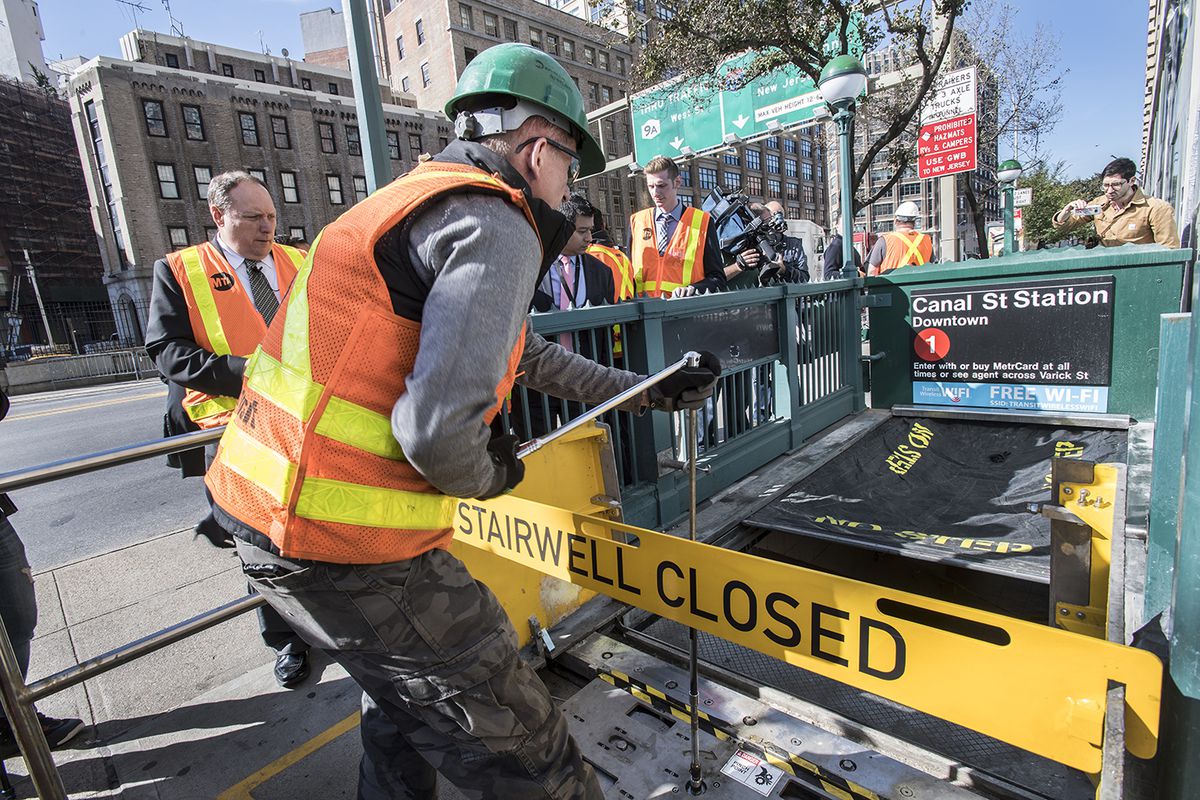New York is flooding subway stations to prepare for the next superstorm
Almost eight years on from Superstorm Sandy, the Metropolitan Transportation Authority tests out a flood barrier as the city prepares for future extreme weather events.
W
ith bigger and more frequent storms predicted to hit New York in the future, the city’s transit authority is looking for ways to cope with the destruction and chaos that weather events – like Superstorm Sandy that hit in 2012 – can cause. By ‘flooding’ a subway station and testing out a new barrier, the MTA hopes to be better prepared for post-storm conditions.
The trial of a new ‘Flex-Gate’ flood barrier took place in November last year and caused concern among commuters who were surprised to see a Broadway station entrance filled with water. When asked via Twitter what was happening, the official NYC Transit account stated they were testing a “flood barrier that would allow us to seal off a subway entrance… We’re doing this because climate change is real”.
While the station looked like it was filled with water, which many were during Sandy, the Flex-Gate was actually preventing water from entering the station. By carrying out a ‘test flood’ over a period of four hours, MTA was able to ensure the barrier was correctly installed.
Made from Kevlar – a strong synthetic fibre that’s used in bicycle tires and racing sails – the Flex-Gate sits at the top of the stairs that lead into the subway, stops the water at street level and prevents it from entering the station. Following the trial, MTA are confident that this large sheet of waterproof fabric can be deployed by one or two people in less than 15 minutes should a storm hit.
Preparing for the next big storm
As a result of Sandy, the transport authority reported some $5 billion in damages, and a proportion of that was due to flooding that wreaked havoc on the underground subway system. At the time, it was the highest storm tide recorded in New York having almost reached 14 feet (the subways begin to flood at 10.5 feet of storm surge) and, as climate change intensifies, the city is likely to see those levels again.
Today, Flex-Gates have been customised and installed across a number of New York’s subway stations and they represent just one of the adaptations being introduced to help protect the city’s infrastructure following a storm. The MTA has also installed flood gates at tunnel portals and emergency generators, and has developed special manhole covers that can withstand large volumes of standing water. In addition, electrical facilities are being protected with watertight doors and marine cabling. By spring this year, work will be completed on the Coney Island Yard Complex, which was flooded with 27 million gallons of saltwater during Sandy.

One of the Flex-Gate tests underway. Image courtesy Patrick Cashin / Metropolitan Transportation Authority
Global climate adaptation strategies
New York isn’t the only place that’s preparing for storms and flash flooding. In the UK, Newcastle University and Northumbrian Water, have created a digital twin of the city in response to the 2012 ‘Toon monsoon’, when a month’s worth of rain fell in two hours during the evening rush hour. This replica allows experts to visualise what would happen if the River Tyne rose by a few metres and to carry out real-time testing of city’s infrastructure in response to flood conditions.
While in China, the rapid urbanisation of Wuhan means that now only 30 of its 127 lakes remain, which has left the low-lying city vulnerable to flooding during monsoon months. In 2016, severe downpours caused metro stations and roads to be inundated with water, resulting in some communities being temporarily cut off from the city. Now, as one of China’s first ‘sponge cities’, Wuhan is trialling ecologically friendly alternatives to traditional flood defences and drainage systems, including porous pavements and artificial wetlands that can absorb excessive rainfall.
The ideas presented in this article aim to inspire adaptation action – they are the views of the author and do not necessarily reflect those of the Global Center on Adaptation.